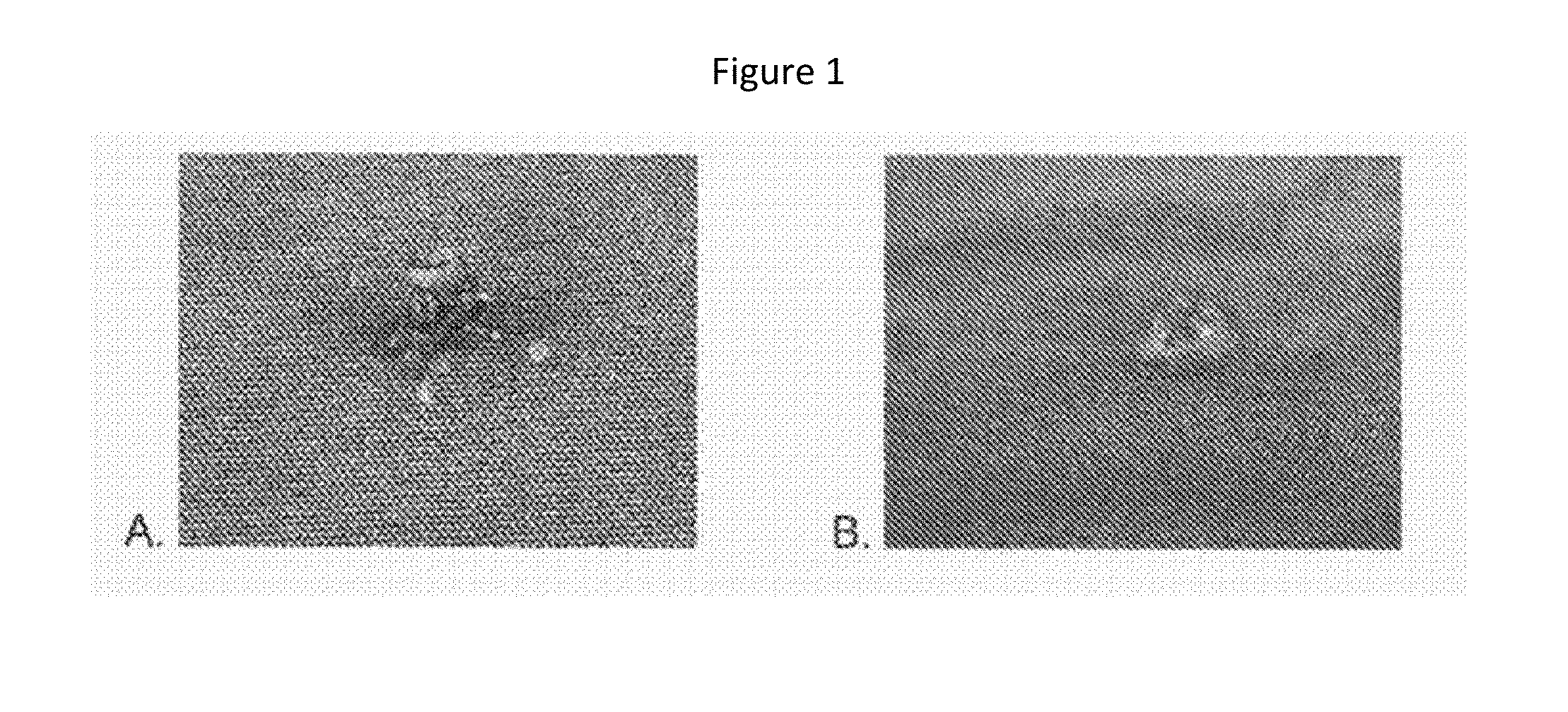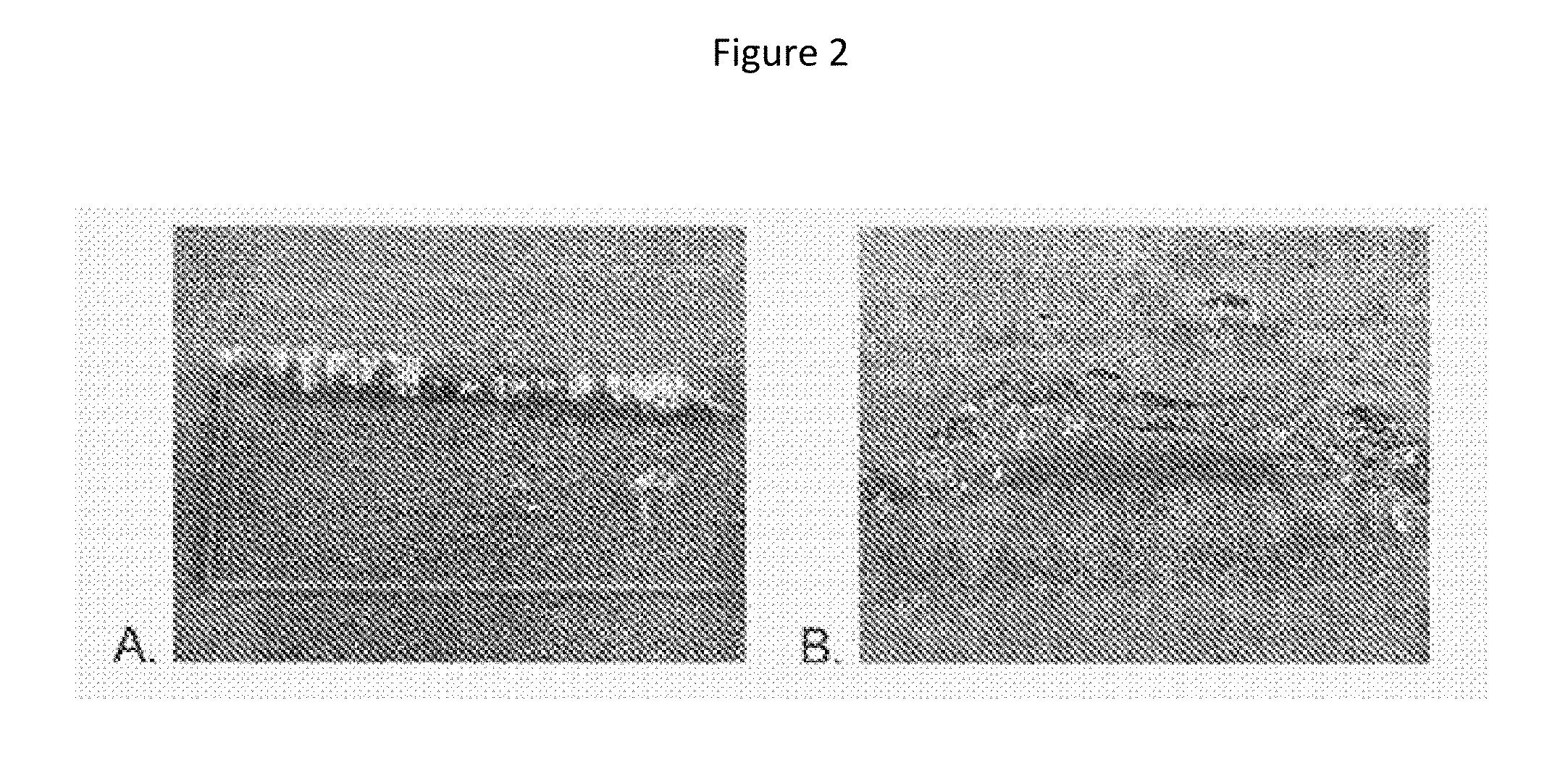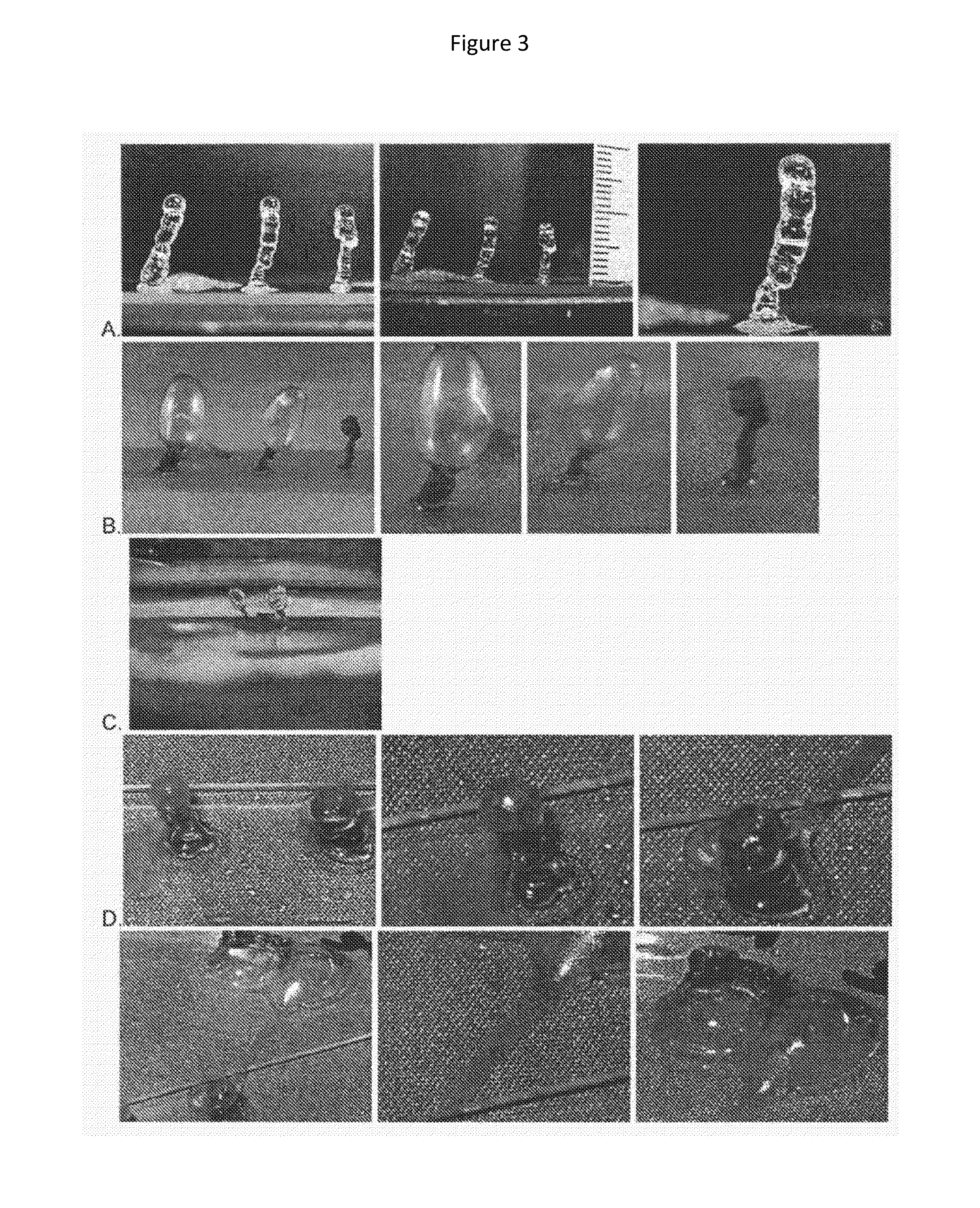Scalable Three-Dimensional Elastic Construct Manufacturing
a three-dimensional elastic and construct technology, applied in the direction of connective tissue peptides, animals/human proteins, coatings, etc., can solve the problems of difficult to form a preferred structure, insufficient robustness of the coacervate of tropoelastin to form a preferred three-dimensional elastic structure, and limitations as to the extent to which such processes can be used in forming structures
- Summary
- Abstract
- Description
- Claims
- Application Information
AI Technical Summary
Benefits of technology
Problems solved by technology
Method used
Image
Examples
example 1
Use of Water as Solvent for Tropoelastin
[0260]100 mg tropoelastin dissolved in 333 μl water at 4° C. Used a 1 ml 31 gauge syringe to place a drop of tropoelastin solution onto a glass slide. Placed at 160° C. for 1 minute. Added a further drop of tropoelastin; left for 1 min before adding a further drop. Repeated approximately 10 times. Left at 160° C. for 4 h. Material turned glassy and darkish brown (A). Placed in PBS—slowly wetted, did not dissolve and became quite elastic (B).
example 2
Use of HFP as Solvent for Tropoelastin
[0261]100 mg tropoelastin dissolved in 500 μL 1,1,1,3,3,3-hexafluoro-2-propanol (HFP) overnight at room temp. Used a 1 mL 31 gauge syringe to place drops of tropoelastin solution onto a glass slide sitting on top of a heating block set at 70° C. Placed at 160° C. for 4 h. Material appeared to bubble in oven and turned glassy and brown (A). Placed in PBS—slowly wetted, became soft and elastic, appeared to have gas bubbles caught within the material (B).
example 3
Use of 70% EtOH as Solvent for Tropoelastin
[0262]Dissolved 100 mg tropoelastin in 650 μl 70% EtOH (154 mg / mL). Used a 1 ml 31 gauge syringe to place drops of tropoelastin solution onto a glass slide sitting on top of a heating block set at 85° C. Could build up 3D structure of drop upon drop by waiting ˜1 min between each drop. Placed at 160° C. oven for 4 h. Material appeared to bubble in oven and turned glassy and darkish brown.
PUM
| Property | Measurement | Unit |
|---|---|---|
| temperature | aaaaa | aaaaa |
| temperature | aaaaa | aaaaa |
| thickness | aaaaa | aaaaa |
Abstract
Description
Claims
Application Information
 Login to View More
Login to View More - R&D Engineer
- R&D Manager
- IP Professional
- Industry Leading Data Capabilities
- Powerful AI technology
- Patent DNA Extraction
Browse by: Latest US Patents, China's latest patents, Technical Efficacy Thesaurus, Application Domain, Technology Topic, Popular Technical Reports.
© 2024 PatSnap. All rights reserved.Legal|Privacy policy|Modern Slavery Act Transparency Statement|Sitemap|About US| Contact US: help@patsnap.com










